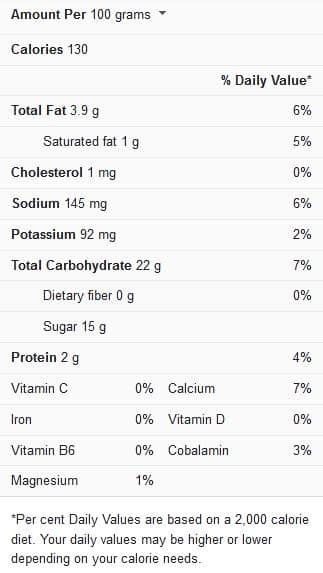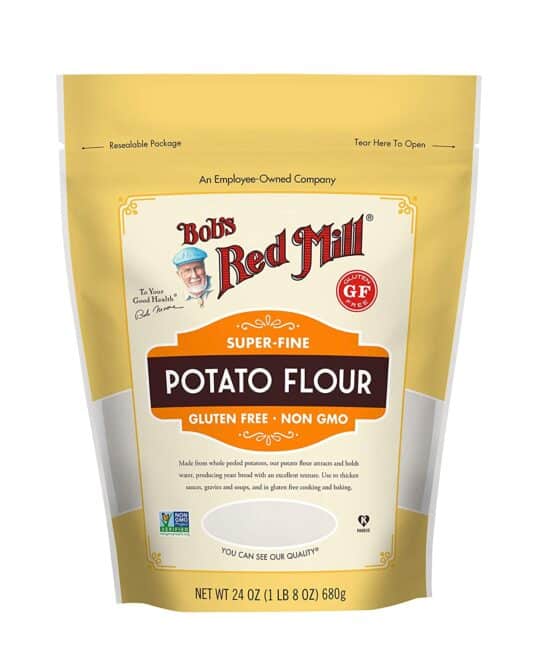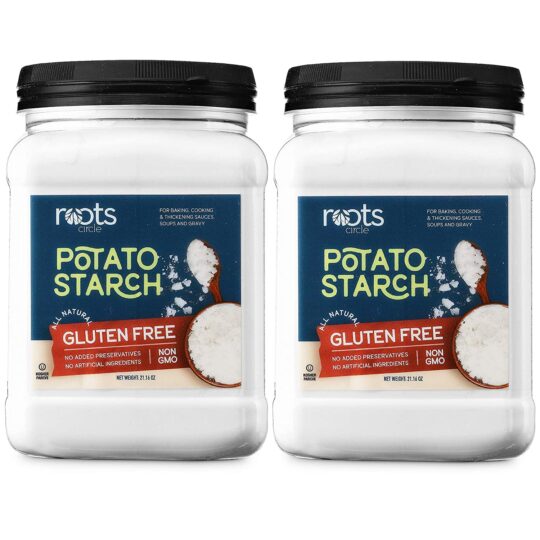Updated on April 9th, 2023
Our description of a perfect pie is crispy and brown on the outside while moist and thick on the inside. But a prevalent complication most amateur bakers encounter has a watery pie interior. To get your pie filling to be thick and moist, you need to use a thickener, and one of the best thickeners out there is tapioca flour.
Many people pick tapioca flour over cornstarch or wheat flour because it is gluten-free and safe for celiac disease or similar medical conditions.
Imagine you are on a gluten-free diet and start craving some pie, you reach for your almond flour and every other ingredient you need to make a gluten-free pie, but shockingly, you find out you are all out of tapioca flour.
Well, this will be horrific, but despite the dismay, what if there were other gluten-free options to replace tapioca flour in your recipe?
Before I start telling you about these substitutes, let us take a closer look at what tapioca flour is all about
Tapioca Nutrition Facts

What is Tapioca Flour?
Tapioca flour is a type of flour gotten from the roots of cassava plants. What is a cassava plant? You may ask, well, a cassava plant is a starchy vegetable native to Brazil’s North and Northeast regions.
The production of this gluten-free flour starts when the cassava roots are chopped into fine shreds, they are then washed and allowed to dry completely. The following process involves grinding the shredded cassava into flour.
This flour is naturally gluten-free and good for people with coconut, grains, and other nuts allergies.
Uses of Tapioca Flour in recipes
Tapioca flour is tasteless and odorless, so it doesn’t impact the flavor of your dish, and rather, it has a lot of impact on the texture. It is normally used as a thickener for gluten-free baked goods, but it can also be used as a gluten-free thickener for other savory dishes like sauces, stews, puddings, and soups.
In pie making, tapioca flour is added to the pie filling; it is boiled until the mixture thickens. It is always good to wait for ten to fifteen minutes before scooping the pie filling into the pie crust.
Apart from pie recipes, here are fifteen other recipes
- Pão de Queijo (Brazilian Cheese Bread)
- Gluten-Free Tortillas
- Gluten-Free Crepes
- Pan De Yuca
- Tapioca Flour Popovers
- Pizza Crust
- Cheese Sauce
- Banana Bread
- Blackberry Blueberry Cobbler
- Gluten-Free Brownies
- Chocolate Chip Cookies
- Pie Crust
- Peach Cobbler
- Dinner Rolls
- Churros
Substitutes for Tapioca Flour in Pie
Tapioca flour is very common in Brazil and other countries in the tropics, so it can be easily gotten from local stores. Still, it may be challenging to get tapioca flour if you are in an area where it isn’t in abundance.
This may become a problem if you are about to bake a gluten-free fruit pie. However, there are some viable alternatives for tapioca flour that are gluten-free. In this article, I will be listing four of the best gluten-free thickeners for your pie recipes when you cannot get tapioca flour.
Cassava Flour

Tapioca flour is made solely from the starchy part of cassava roots. In contrast, cassava flour is made with the entire cassava root, making it denser in nutrients and eventually a better choice when the two are compared.
The fiber content of cassava flour is a lot higher than that of tapioca flour, this would make your pie filling a lot thicker, so you may want to remove any other thickening agent in your dish to create some space for cassava flour.
Potato Flour

Potato flour is another gluten-free substitute for tapioca flour. This flour is made from whole potatoes, and they have a potato flavor that can add another layer of complexity to your pie recipe.
Just like other thickeners, using too much potato flour in your recipe might result in a tough and gummy texture that may be difficult to chew.
You may find some beige-colored flours labeled “potato flour” in your local grocery store; they can come in handy in many recipes, so make sure you stock up on them if you get the chance to.
Arrowroot Flour

Arrowroot flour comes close to tapioca flour in terms of flavor and consistency, and it is gluten-free, just like every other thickening agent on this list. This flour is made from a starchy substance in Maranta arundinacea (a tropical plant).
Arrowroot flour works as an excellent thickening agent in various recipes, but the downside of using it in your pie recipe is that it may not recreate that chewy texture of tapioca flour; to fix this, you may want to add another type of flour to your recipe.
Potato Starch

Potato starch is similar to potato flour, but it is not flour. The good news is that it is gluten-free and can thicken your pie fillings. Potato starch is gotten from leucoplasts found in the chunky stems of potatoes.
It has a fine consistency and a bright white appearance that distinguishes it from potato flour.
Potato starch would give a thicker consistency than tapioca flour, so using this product in moderation is best. For every cup of tapioca flour, use a half cup of potato starch.
Frequently Asked Questions (FAQ)
How long can you keep tapioca flour?
Most starches have a long shelf life, and tapioca flour is no exception. If stored in your pantry, it can keep for as much as a year or more.
What are the health benefits of tapioca flour?
Tapioca flour is perfect for losing some weight, as the flour does not contain any fat or cholesterol. It is also low in sodium, making it a heart-friendly food.
Is there any keto thickener?
Xanthan gum, Guar gum, and gelatin are examples of low-carb thickeners that you can use for your sauces, stews, and other recipes. Some work well in cold applications, while others can withstand the heat.
Conclusion
If you are about to bake pie a gluten-free pie and you cannot get tapioca flour for your pie recipe, there is no need to get all worked up because you can still make delicious pies with some of these gluten-free thickeners.